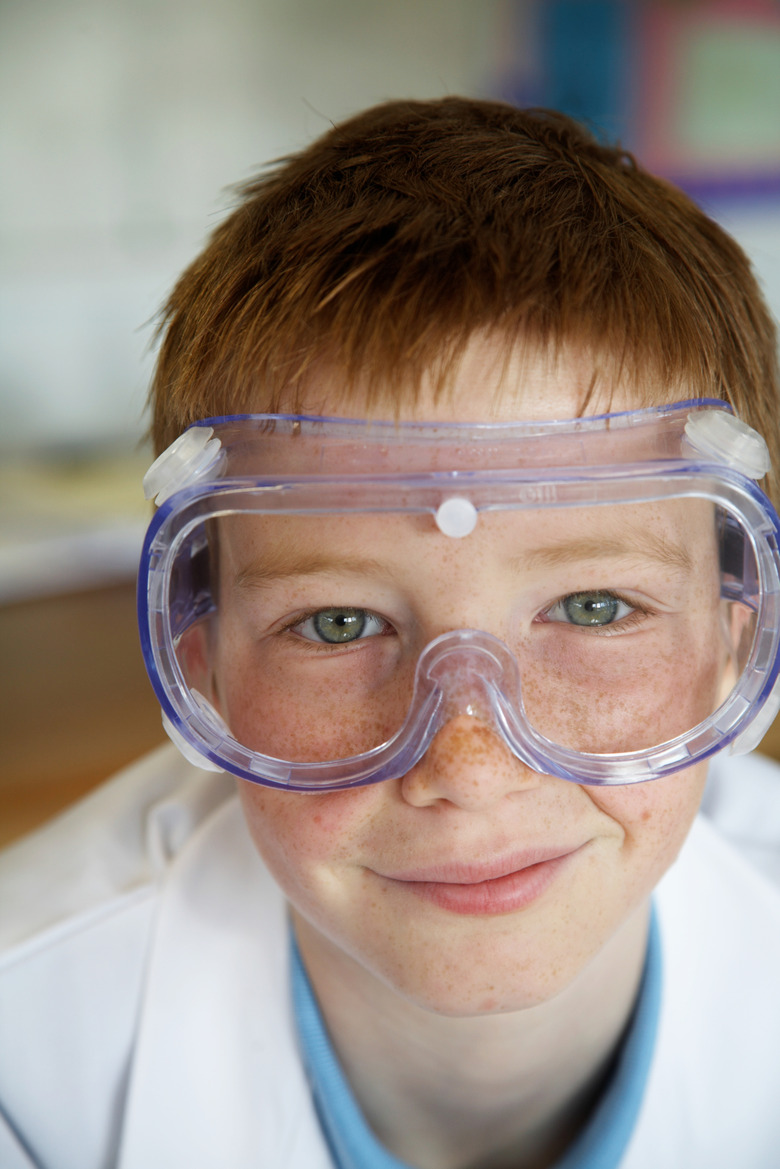Fourth-Grade Science Projects With Rocks
Experiments involving rocks at science fairs are a way for children to learn about geology. Rock experiments can teach everything from the structure of rocks to how they dissolve in the environment. Before fourth graders attempt to conduct experiments involving rocks its a good idea to teach them about geology. Students can then recreate what they know from the classroom.
Sponge Rock Experiment
Sponge Rock Experiment
One science fair project for fourth graders involves the way rocks absorb moisture. In the natural environment this teaches students about the process of erosion. All rocks are porous, some rocks more than others, and this can be demonstrated in the sponge rock experiment. At the science fair, before the audience, take a piece of chalk, weigh it on a spring scale and drop it into a cup of water. After five minutes weigh the chalk again to show the principle of rock's absorbency.
Bubbling Rock Experiment
Bubbling Rock Experiment
In this experiment children can learn and express how acid rain effects rocks. It's a tool to show how man-made pollution can effect the natural environment. Rocks with carbonate partially dissolve when exposed to acid. This process can be demonstrated using a piece of limestone. Put a piece of limestone in a cup of vinegar and see the limestone bubble. Sediment will form at the bottom of the cup representing the erosion of rock.
Floating Rocks
Floating Rocks
Everyone knows most rocks sink in water, but some rocks float. This is a neat experiment for a science fair because this behavior of rocks is unexpected. Children can buy pieces of pumice or kinds of volcanic rock at their local science museum. Put the stone in a glass of water and see how it floats and repeat the process with other common stones to show how they sink. The stones may even be at similar weights and one will float while the other won't. Weigh the stones to show this. The purpose of the experiment is to also reveal the different densities of some kinds of stone. Pumice is more porous and air gets trapped inside, which makes it less dense than typical rocks and allows it to float.
Make a Rock
Make a Rock
This experiment may require a little help from an adult because it uses a burner to heat sugar. Children can see how crystals form within rocks. Pour a cup of sugar into a pan on a hot plate and add hot water. A few drops of food coloring will enhance the effect. The sugar and water mixture can be stirred. Tape a string on the side of a glass and pour the mixture into the glass. Place the mixture in a pot of ice. Tiny crystals will form.
Cite This Article
MLA
Bostdorf, Ben. "Fourth-Grade Science Projects With Rocks" sciencing.com, https://www.sciencing.com/fourthgrade-science-projects-rocks-12017077/. 24 April 2017.
APA
Bostdorf, Ben. (2017, April 24). Fourth-Grade Science Projects With Rocks. sciencing.com. Retrieved from https://www.sciencing.com/fourthgrade-science-projects-rocks-12017077/
Chicago
Bostdorf, Ben. Fourth-Grade Science Projects With Rocks last modified August 30, 2022. https://www.sciencing.com/fourthgrade-science-projects-rocks-12017077/
